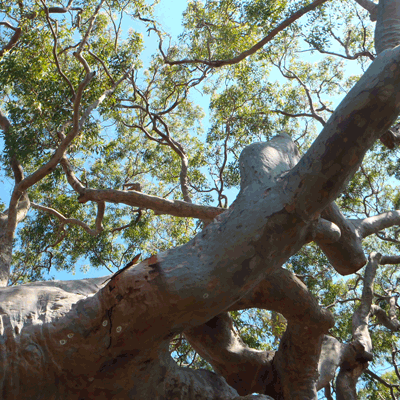There are so many benefits of trees (particularly large trees) in urban environments and we’ve listed just a few below.
But sometimes all the justifying you need is to show the economic case for urban trees. That is:
- Higher property values: Lush green treed spaces are associated with higher property values and are often also serving functions of functional spatial design which in turn assists in creating safe and community focused/friendly neighbourhoods.
- A study of the city of Toronto, Canada shows trees provide $28.2 million worth of services to the city each year in the form of savings on heating and cooling, improvements to air quality and carbon sequestration.
- Medical cost savings, insurance reductions and increased workforce productivity (through added quality of life). Physical and mental health are affected by the amount of vegetation surrounding us. It is called biophilia or biophilic design which is how I practice as a landscape architect (connecting natural systems in a social, environmental and economically enlightened way).
- Stormwater infiltration and filtration, uptake and diversion (increased longevity and reduced pressure on the stormwater infrastructure).
- There are so many more economical cases for urban trees such as increased tourism due to a beautiful ‘lush’ city scape, lower crime rates, greater sense of community, family and support through “socially connective landscape amenity”, increased hardscape infrastructure longevity by regulating solar exposure (e.g. paths and roads), contributing to reducing the rate of climate change and it’s associated economic costs.
_____________________________________________________________________
Some of the many other justifications for trees (particularly large trees) include the following: I’m sure you’ll be able to add many many more.
- shade and protection,
- regulating temperature and humidity,
- oxygen,
- habitat and food for wildlife (birds, insects, animals, soil biology and mycology, soil micro-organisms and ecosystems).
- Trees can form connections between green islands in urban areas. Trees and vegetation help habitat to interconnect and network and ultimately be more resilient.
- potential for food, fruit, timber and mulch. (be it directly or indirectly such as through supporting pollinators).
_____________________________________________________________________
For me, being able to design landscapes with long term environmental benefits including large trees to be able to reinforce Sydney’s renowned vegetated landscape character is very motivational in my practice as a landscape architect, consulting arborist and breeder of native stingless bees.
https://www.linkedin.com/pulse/green-infrastructure-economy-elke-haege?published=t




